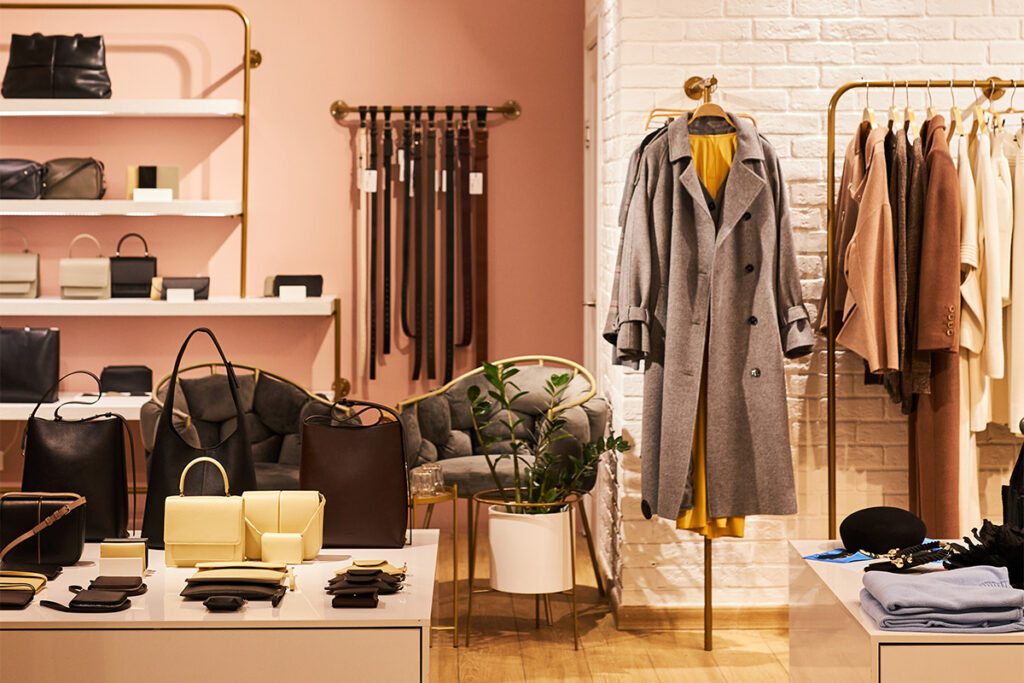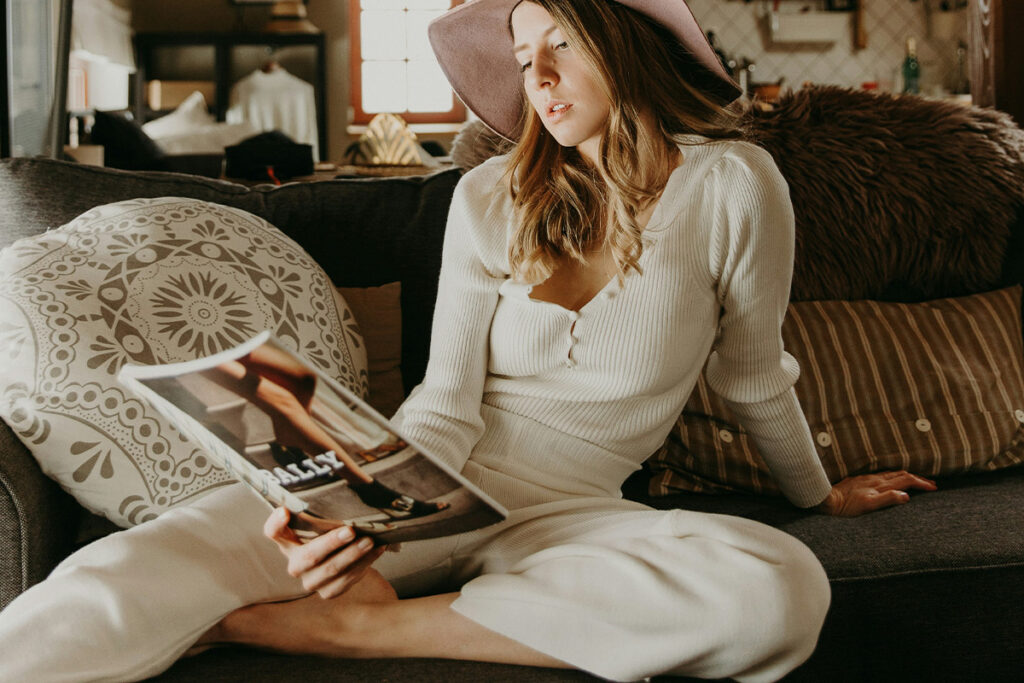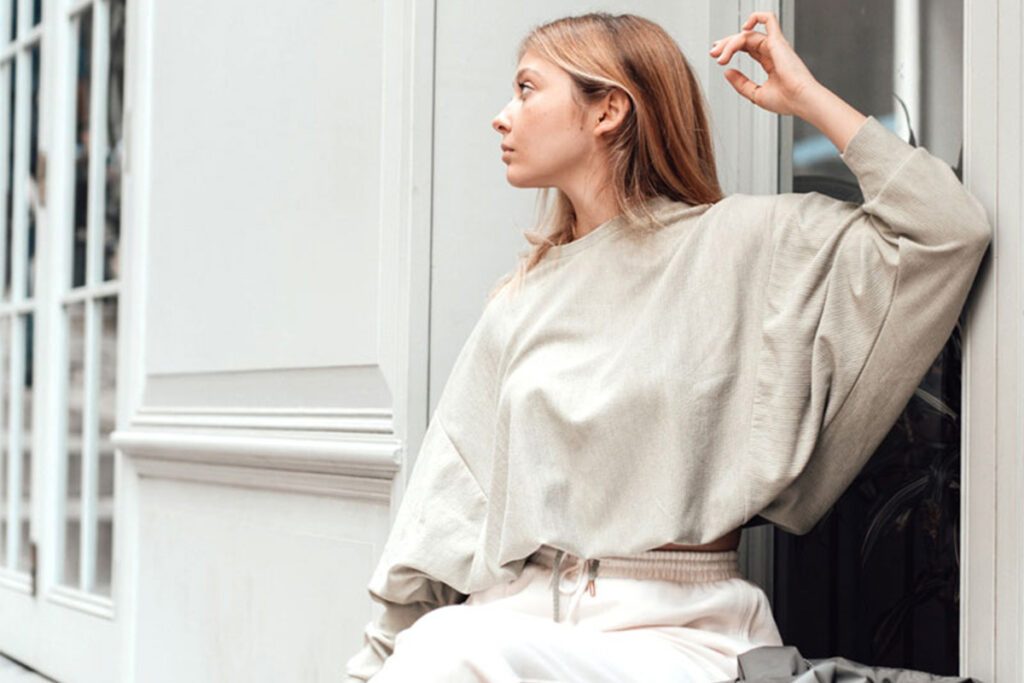In retail as in fashion, trends come and go, but one concept seems to be here to stay – quiet luxury. And yet, quiet luxury isn’t necessarily new. One might not consider it a trend at all. It’s an approach to consumerism, how products are selected and communicated, and for some this understated and refined sensibility is a lifestyle north star.
The term quiet luxury has been most closely associated with clothing and accessory design—often minimalist styling, inconspicuous branding, quality materials, a sort of “if you know you know,” positioning. This contrasts with more overt forms of luxury branding that rely heavily on flashy logos, extravagant displays, and conspicuous consumption.
Call it timeless, call it “old money” aesthetic, call it low-key flex; quiet luxury goes beyond product design and brand comm. As consumers expect more consistent experiences from brands at every touch point, quiet luxury is being reflected in the physical spaces these brands embody as well.

Cultural Shifts Spark Interest in the Quiet Luxury
The emergence of quiet luxury can be traced to a recent significant cultural shift in consumer values and preferences. According to The Drum, “over the past year, Google searches for the term ‘quiet luxury’ grew by a staggering 614%. Terms like ‘old-money outfit’ have 50,000 searches per month, while ‘old-money aesthetic’ gathers more than 74,000.”
Conspicuous Consumption Is Out; Stealth Wealth Is In
This shift aligns with a growing focus on sustainable practices, with quiet luxury brands often utilizing recycled materials and offering repair services to extend the life of their products.
SocietyA shares some more of the more of the why behind quiet luxury:
“In a time punctuated by major worldwide events, from the Covid-19 pandemic to everyday reminders of the climate crisis, the consumer mindset has undergone a transformation. In a nutshell, we’re moving away from the ‘buy and toss’ mindset and leaning more toward quality over quantity.”
That said, quiet luxury caters to a premium market segment, focusing on well-crafted, timeless pieces that come at a higher price point compared to mass-produced goods.
Quiet luxury, much like its cousin accessible luxury, is as much a movement as it is a style trend. It’s a reflection of the current reality facing consumers, yet the understated look of quiet luxury in fashion doesn’t just belong to high-end brands.

Brands Mastering the Art of Quiet Luxury
There are certain products and brands that epitomize quiet luxury.
The Row, founded by Mary-Kate and Ashley Olsen, was introduced long before celebrity fashion brands were popular. But as Libby Page, market director for Net-a-Porter observes in this Vogue article, “The Row are the epitome of understated and timeless elegance, they make simple wardrobe foundations feel luxurious and unique. Every season I am in awe of this brand and how true it stays to its DNA. The Row is one of my top destinations for a trans-seasonal wardrobe, with impeccable detailing, quality, and craftsmanship, they have set the benchmark for quiet luxury dressing. They excel at intelligent dressing for intelligent women of all ages.”
With its partnership with Peter Do, Banana Republic is stepping into the quiet luxury culture. The neutral color palette, timeless designs, and quality craftsmanship appeal to the consumer who is looking to invest in long-term, timeless, understated quality pieces.
Todd Snyder was fascinated by Ralph Lauren and the brand’s ability to be fashionable for two or even three generations at a time. It is part of what has motivated his designs. He explains, “You have to have great product. And I really spend a lot of time on design. I touch everything—the buttons, the fabric, it’s my favorite thing. But I’m always trying to present in a way that the customer understands it. The second step is telling the story. I think that’s where the true art happens.”
The DTC brand Everlane was founded on the idea of radical transparency. With new leadership brought on board in 2022, they broadened their commitment to transparency and embraced sustainability. According to Forbes, CEO Andrea O’Donnell, “is fixed on making the company profitable by maintaining the brand’s ethical and sustainability commitments and continuing its radical transparency promise while jettisoning the fashion industry’s addiction to reinventing itself every season that results in last season’s cast-offs ending up in landfills.”
The Quiet Luxury Experience
Central to the essence of quiet luxury is the art of subtlety. Rather than bombarding consumers with overt displays of wealth or status, brands rely on nuanced imagery and refined messaging from ad campaigns to in-store layout to convey brand ethos. Consider design that communicates sophistication, class, and elegance in an understated manner. The focus is on creating a serene and sophisticated environment that allows the products to speak for themselves.
This reflects a broader cultural shift in consumer values, where the intangible elements of luxury experiences—emotional connection, unique storytelling, and a celebration of heritage and artistry—take precedence.
Quiet Luxury and the Customer Experience
These groups prioritize experiences over possessions, seek individuality, and value craftsmanship. The trend caters to those preferences with exclusive, personalized, and artisanal products that resonate with the desire for a more meaningful and purposeful approach to luxury consumption.
Retailers can take inspiration from brands like Glossier, known for its personalized approach to beauty retail. Through excellent customer service, elegant packaging, and high-quality products, the store prioritizes attention to detail to create loyal customers—something the retailer says is essential to stand out in a marketplace where shoppers are looking for a sense of connection and quality. Implementing personal shopping experiences tailored to individual tastes and preferences elevates the retail experience.
Creating moments of connection and intimacy is crucial, says John Meadow, founder of LDV Hospitality. The focus shifts from loud, ostentatious displays to crafting cozy nooks, comfortable seating, and intimate spaces that make the experience memorable.

The Lasting Allure of Quiet Luxury
As we witness a rebound in the retail sector, the quiet luxury aesthetic stands as a beacon of sophistication, appealing to a market that values quality over quantity. It’s not just a trend; it’s a cultural shift in how consumers perceive and engage with luxury, making it a significant force shaping the future of retail.
Quiet luxury is a design philosophy transforming brick-and-mortar spaces across diverse sectors. By embracing simplicity, personalization and authenticity, retailers can not only align with changing consumer values but also create an enduring allure that defines the Quiet Luxury aesthetic.
As The Robin Report explains,
“In this strange new world, we’re focused on survival, not needless spending. We’re focused on quality, not repping brands. We’re focused on durability, not buying cheaply made garments just to turn heads. While those who can afford it will still spend $450 on a T-shirt, it will be nearly indistinguishable from what you can find at any department store. The new face of luxury is, paradoxically, pretty darn humble.”
- CFO Joe Taylor





